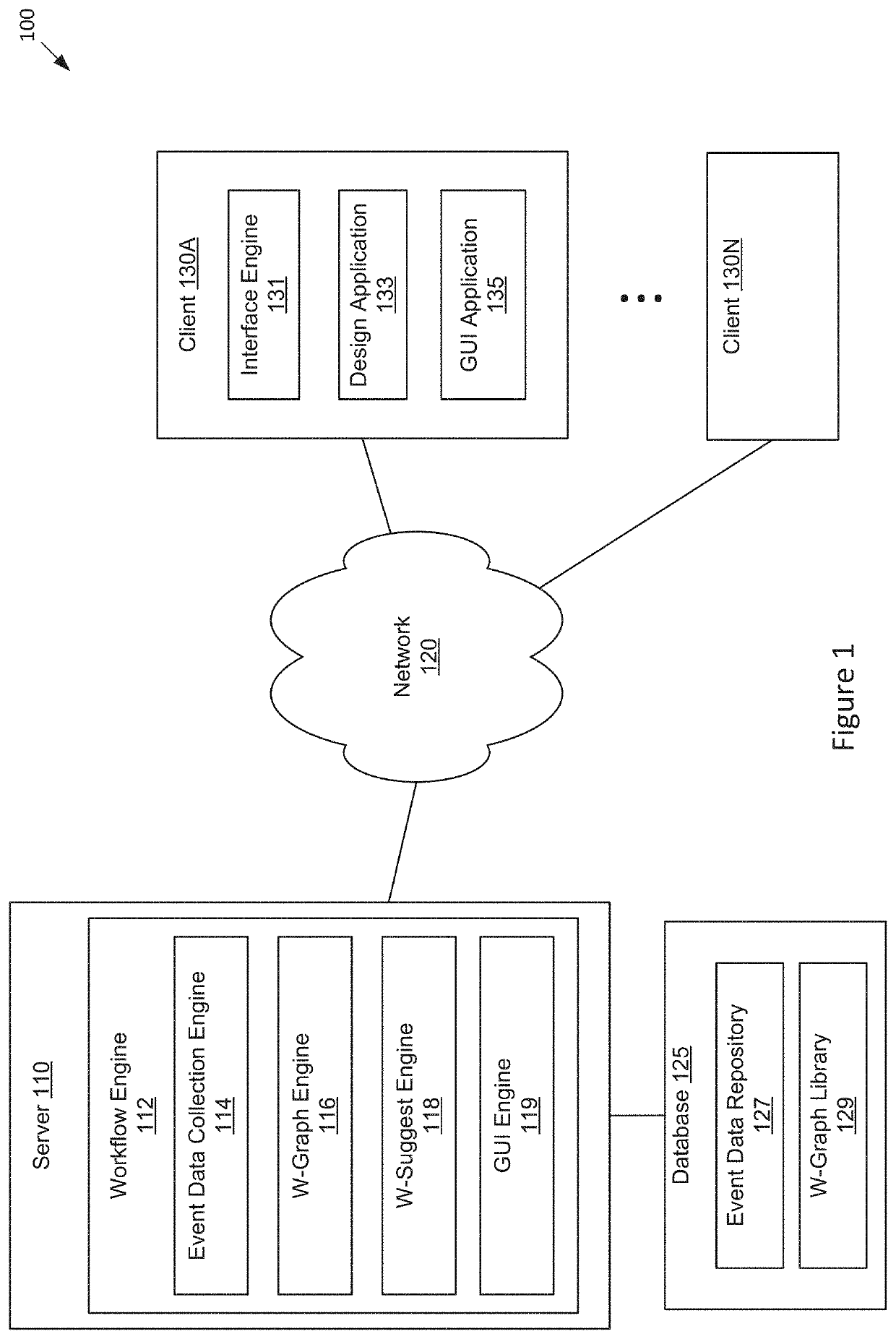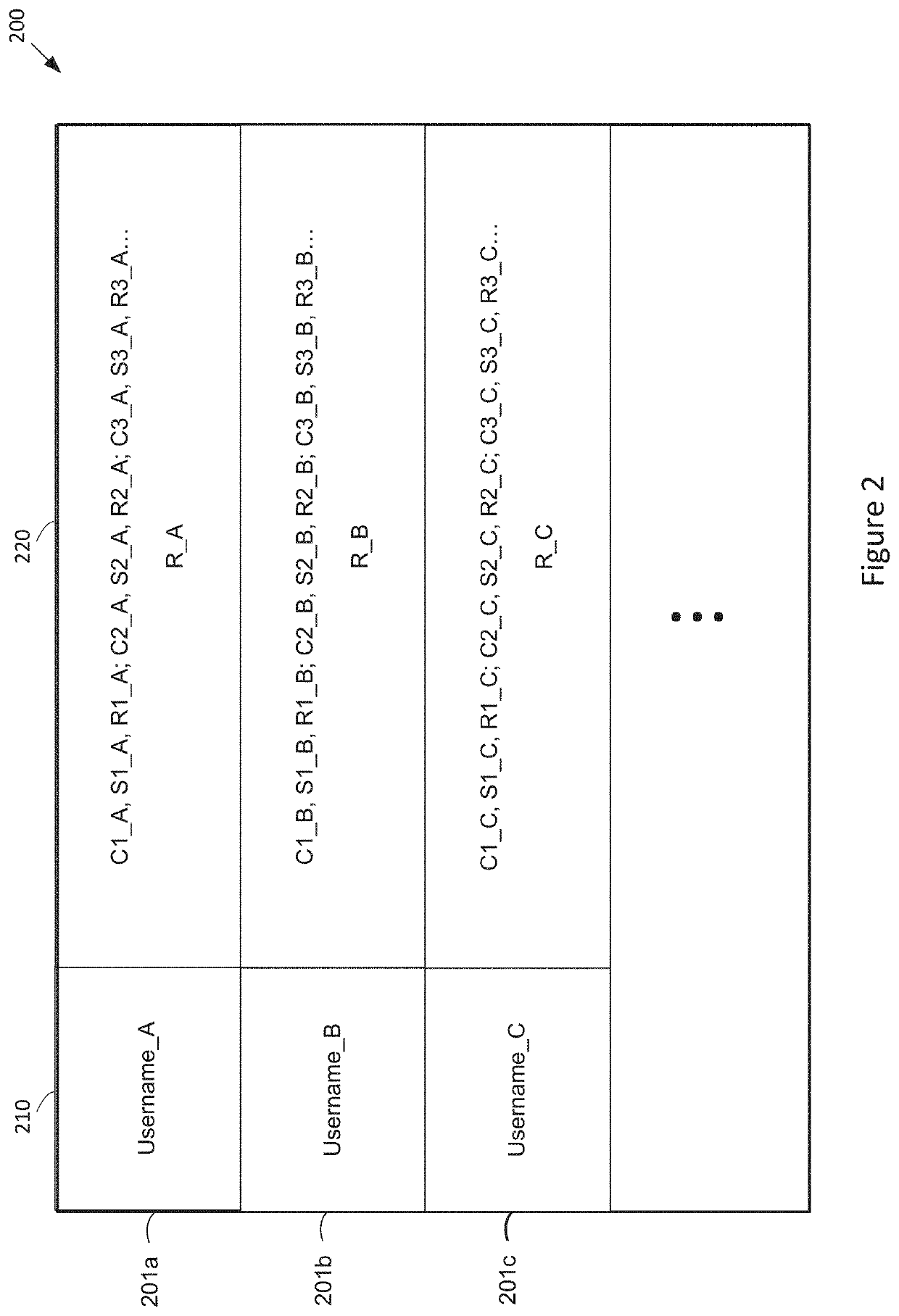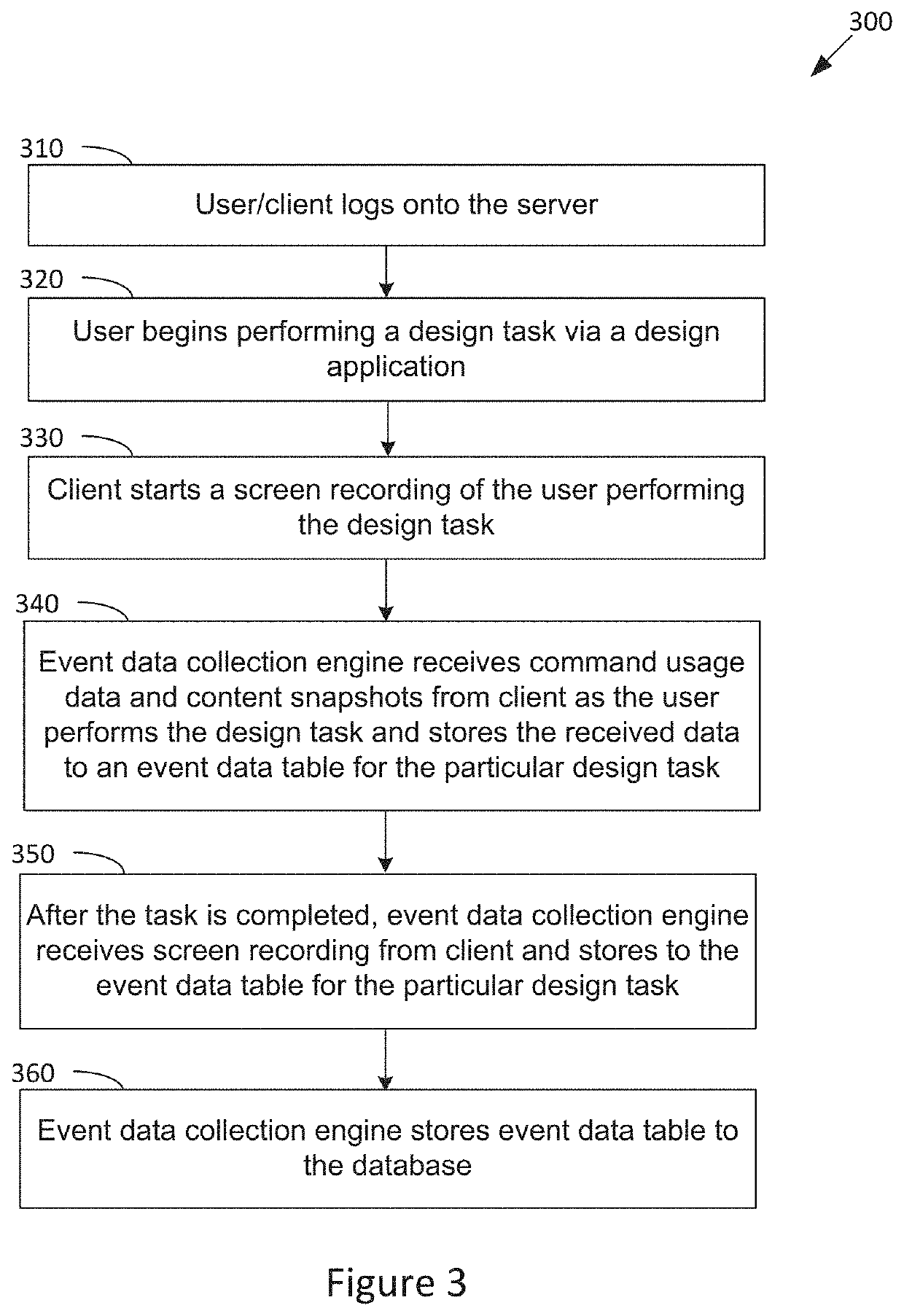Techniques for workflow analysis and design task optimization
- Summary
- Abstract
- Description
- Claims
- Application Information
AI Technical Summary
Benefits of technology
Problems solved by technology
Method used
Image
Examples
Embodiment Construction
[0002]The present invention relates generally to computer science and, more specifically, to techniques for workflow analysis and design task optimization.
Description of the Related Art
[0003]Software applications, such as computer-aided design (CAD) applications, are commonly used by architects, engineers, and other design professionals to aid in the creation, modification, analysis, and / or optimization of a design. Among other things, using software applications can substantially increase the productivity of the designer and / or improve the overall quality of a design. For example, a CAD application may be used to construct computer models representing real-world constructs, such as buildings, vehicles, electronic appliances, furniture, and the like. The output of a software application also may include electronic files comprising a three-dimensional (3D) printable design that can be exported to a 3D fabrication device that fabricates a physical product.
[0004]Advances in computer an...
PUM
 Login to View More
Login to View More Abstract
Description
Claims
Application Information
 Login to View More
Login to View More - R&D
- Intellectual Property
- Life Sciences
- Materials
- Tech Scout
- Unparalleled Data Quality
- Higher Quality Content
- 60% Fewer Hallucinations
Browse by: Latest US Patents, China's latest patents, Technical Efficacy Thesaurus, Application Domain, Technology Topic, Popular Technical Reports.
© 2025 PatSnap. All rights reserved.Legal|Privacy policy|Modern Slavery Act Transparency Statement|Sitemap|About US| Contact US: help@patsnap.com



